#theo eshetu
Photo
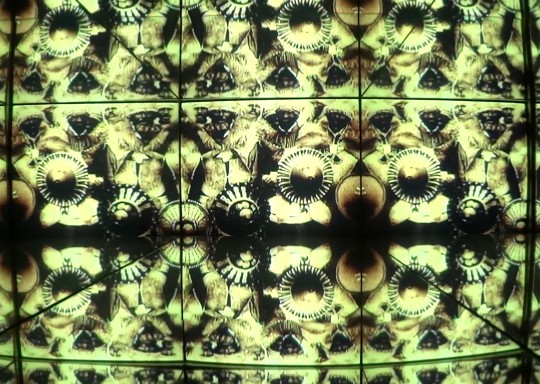
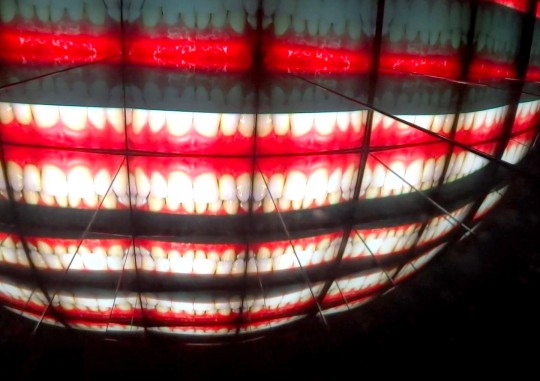
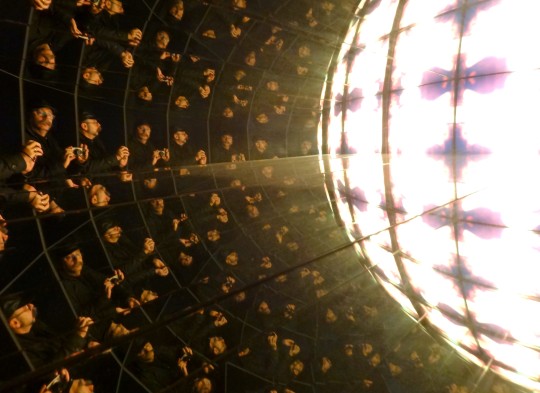

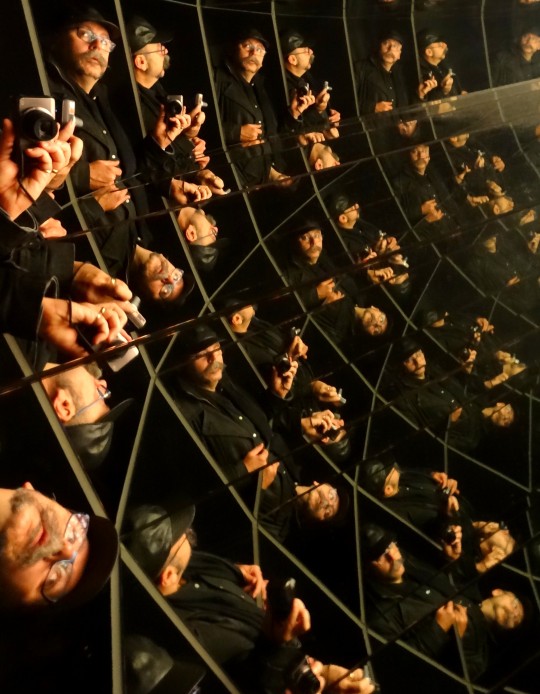
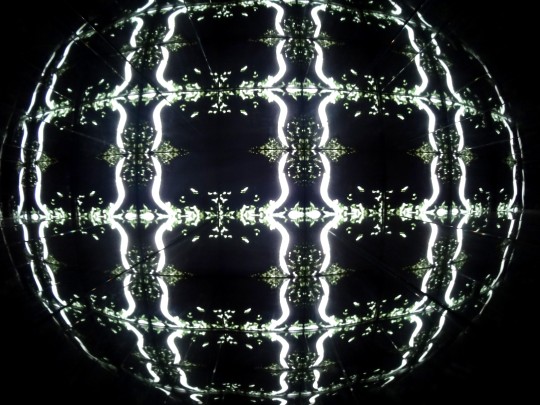
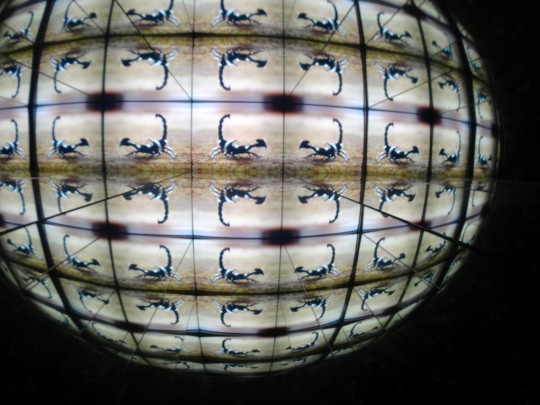
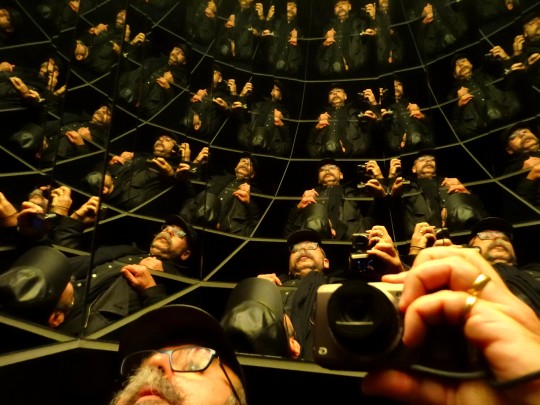
Je reviens à mon projet de présenter la plupart de mes 55000 photos (nouveau compte approximatif. On se rapproche du présent !).
2015. A Lille, au TriPostal, il y avait une autre expo : “Tu dois changer ta vie” :
Ici un film kaléidoscope : Theo Eshetu : "Brave New World”
#souvenirs#lille#art contemporain#tri postal#tripostal#tu dois changer ta vie#vidéo#kaléidoscope#theo eshetu#reflet#moustache
3 notes
·
View notes
Photo

Theo Eshetu, QUESTA È VITA, 1986, Single-Channel Video with Sound, 9m 41s
1 note
·
View note
Text
Theo Eshetu | Tiwani Contemporary
https://www.tiwani.co.uk/artists/42-theo-eshetu/


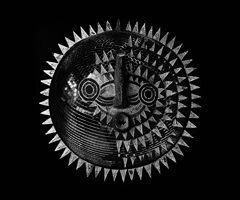
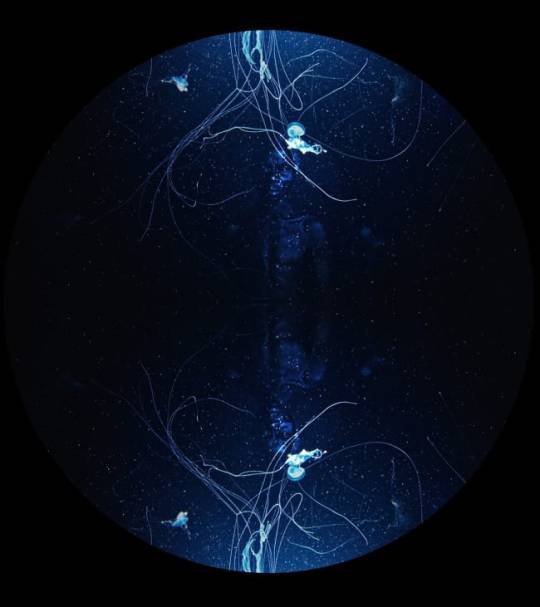






7 notes
·
View notes
Text
Milano: dall'1 al 5 marzo l'ottava edizione di "Milano MuseoCity 2024"
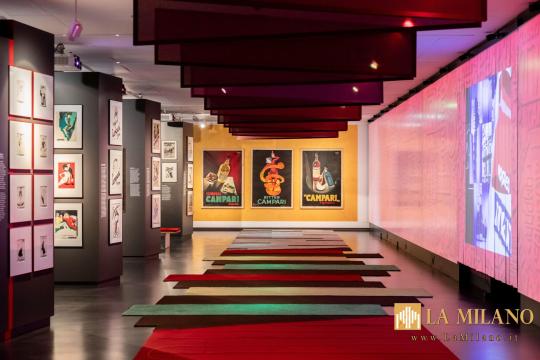
Milano: dall'1 al 5 marzo l'ottava edizione di "Milano MuseoCity 2024".
Venerdì 1° marzo prende il via l'ottava edizione di "Milano MuseoCity", l'appuntamento milanese promosso dal Comune di Milano in collaborazione con l'Associazione MuseoCity ETS che apre le porte di musei pubblici e privati, archivi d'artista, case museo, fondazioni d'arte e musei d'impresa, non sempre accessibili al pubblico.
"Mondi a Milano", il tema scelto per il 2024, unisce i 109 partecipanti in un omaggio a una delle caratteristiche più distintive della città: la sua capacità di accogliere stimoli culturali diversi e di interconnetterli per dare vita a una cultura propria.
"Questa ottava edizione vede 'Milano MuseoCity' estendere la propria programmazione di ulteriori due giornate rispetto agli scorsi anni – ha dichiarato l'assessore alla Cultura Tommaso Sacchi –. Un arricchimento del programma che consentirà di ampliare le occasioni di visita, offrire un ventaglio ancora più ampio di possibilità - dall'arte al design, dalla moda alla scienza, dall'archeologia alla letteratura, alla musica - per conquistare la curiosità e l'interesse di un pubblico non abituato a entrare in spazi espositivi e museali".
Tra le novità di questa edizione due progetti speciali: "Musei in Galleria" e "Musei in Vetrina".
"Musei in Galleria" ha l'obiettivo di creare uno scambio culturale rafforzando il concetto di museo diffuso, uno dei valori fondanti di MuseoCity: nove gallerie d'arte associate ad ANGAMC (Associazione Nazionale Gallerie d'Arte Moderna e Contemporanea) ospitano un'opera d'arte o un progetto di altrettanti musei e archivi della rete di MuseoCity.
Partecipano: 10 A.M. ART con Leonardo3 Museum, Cardi Gallery con MAS – Museo d'Arte e Scienza, Dep Art Gallery con l'Archivio Emilio Scanavino, M77 Gallery con la Fondazione Emilio Isgrò, NP ArtLab – Martelli Fine Art con Benevelli Archive, Nuova Galleria Morone con la Fondazione Piero Manzoni, Osart Gallery con l'Archivio Agnetti, Salamon Fine Art con la Fondazione Federica Galli, Tommaso Calabro con l'Archivio Fausta Squatriti.
"Musei in Vetrina" illustra la creatività milanese e la stretta relazione tra arte e industria. Le vetrine di undici brand del Made in Italy (Alessi, Artemide, Atlas Concorde, Cassina, De Padova, Kartell, Lavazza, Marazzi, Missoni, Molteni&C, Poltrona Frau) presentano allestimenti ad hoc che, attraverso materiali d'archivio e pezzi iconici, raccontano le rispettive culture d'impresa: un modo per rendere "Milano MuseoCity" ancora più partecipata e capillare.
A fare eco al progetto "Musei in Vetrina" sottolineandone il concetto che gli ha dato origine, la mostra "Exposure. Arte, culture, moda dentro e fuori la vetrina", al MUDEC, invita il pubblico a entrare – in modo letterale e metaforico – nella grande vetrina del museo per comprendere i molteplici significati che un oggetto può assumere in una teca espositiva. L'esposizione presenta opere di Theo Eshetu, Monia Ben Hamouda, Mark Dion, Sam Durant, Damien Hirst in dialogo con le collezioni del museo.
La sezione "Museo Segreto", che da sempre caratterizza la manifestazione di MuseoCity, svela quest'anno 63 opere inedite o proposte in modo innovativo, e riserva un'attenzione particolare all'infanzia: in collaborazione con Alchemilla, MuseoCity promuove in diverse sedi (Archivio Atelier Pharaildis Van den Broeck, Archivio Rachele Bianchi, Casa Museo Spazio Tadini, Centro Artistico Alik Cavaliere) dei laboratori per bambine e bambini attraverso i quali raccontare il loro modo di vedere e interpretare l'arte, a partire dalle opere selezionate per Museo Segreto.
Tanti i nuovi partecipanti, tra cui Archivio Storico Fondazione Fiera Milano, Archivio Storico e Museo Diffuso Sisal, Archivio Storico Touring Club Italiano, Banco BPM, Collezione Giuseppe Iannaccone, Gio Ponti Archives, Kasa dei Libri, Palazzina Appiani - FAI e molti altri.
In occasione della manifestazione, Palazzo Reale presenta la mostra del fotografo Alex Trusty "Contemporary Museum Watching" che raccoglie circa 60 scatti inediti. Nelle opere, realizzate fra il 2015 ed il 2023, in oltre 80 musei, Alex Trusty coglie tutto ciò che succede intorno all'opera d'arte e in particolare dal punto di vista dello spettatore.
Tra le numerose iniziative si segnalano i seguenti.
La performance di danza contemporanea di Stefania Tansini "L'ombelico dei limbi", al PAC, ispirata al drammaturgo e attore francese Antonin Artaud.
"Il giro del mondo in 5 Giornate", promossa dall'Associazione culturale Profumo di Milano, espone pezzi unici di arte e artigianato raccolti nei più nascosti angoli del mondo, cimeli etnografici di prestigiosa fattura selezionati per restituire al pubblico l'immaginario e la fascinazione del romanzo di Jules Verne "Il giro del mondo in 80 giorni". Gli interessanti reperti sono prestati in esclusiva da alcune Botteghe artigiane della rete di Galleria&Friends che li custodiscono nei propri archivi storici.
Il concerto promosso dal Leonardo3 Museum al Conservatorio Giuseppe Verdi, dove si possono ascoltare musiche suonate sulla riproduzione di strumenti musicali ispirati a quelli ideati dal genio di Vinci.
La sessione di yoga al Museo del Novecento, immersi nella luce del neon di Lucio Fontana.
Nel Vivaio Bicocca, le ricercatrici del Dipartimento di Biotecnologie e Bioscienze - Biome Research Team, accompagnano i visitatori e le visitatrici alla scoperta della fitta rete di interazioni tra micro e macro organismi.
A conclusione della manifestazione, la proiezione al Teatro Filodrammatici del film "Mondi a Milano" dedicato al network di MuseoCity, diretto da Giovanni Pitscheider, e realizzato grazie al supporto di MUMAC – Museo della macchina per caffè di Cimbali Group.
"Milano MuseoCity" quest'anno si avvale del supporto di Deutsche Bank, DWS e di MUMAC - Museo della macchina per caffè di Cimbali Group, oltre che della collaborazione di Abbonamento Musei Lombardia/Valle d'Aosta, ANGAMC (Associazione Nazionale Gallerie d'Arte Moderna e Contemporanea), MUDE | Circuito Lombardo Musei Design, Museimpresa e Rete Fotografia.
Gli eventi di "Milano MuseoCity 2024" saranno documentati dall'associazione Donne Fotografe.
È possibile scaricare il programma completo di Milano MuseoCity 2024, consultare le schede di approfondimento della sezione "Museo Segreto" e dei due progetti speciali dal sito di MuseoCity www.museocity.it.
Presso le istituzioni partecipanti, le gallerie e i flagship store sono inoltre disponibili delle mappe gratuite.
INFO [email protected] | www.museocity.it...
#notizie #news #breakingnews #cronaca #politica #eventi #sport #moda
Read the full article
0 notes
Text
vimeo
The return of the axum obelisk: Theo Eshetu aborde la documentation d'un événement historique d'une importance fondamentale pour l'histoire éthiopienne, pour la narration de l'histoire coloniale italienne et pour remettre en question son héritage dans le présent. À travers cette narration audiovisuelle non linéaire présentée sur 15 écrans, l'œuvre présente le retour en Éthiopie depuis l'Italie de la stèle d'Axoum et son érection dans la ville éthiopienne du même nom.



La partie intéressante de cette installation, de mon point de vue, réside dans le moyen narratif utilisé. L'idée de voyage, de rédemption et de fierté nationale est présentée sur un ensemble d'écrans qui parviennent à souligner de manière extrêmement efficace les sentiments précédemment énumérés. Dans mon analyse personnelle, j'ai été intrigué par la manière dont l'artiste utilise précisément ces écrans et les vidéos projetées pour reproduire des associations de forme et de couleur évoquant les textures traditionnelles éthiopiennes. Cette sensibilité et cette profondeur dans le projet renforcent considérablement le message véhiculé par cette installation de revanche et de valeur historico-nationale éthiopienne.
0 notes
Text
Modern Art, Ancient Tradition, from Africa and the Diaspora
Modern Art, Ancient Tradition, from Africa and the Diaspora

View On WordPress
#African art#art#Bamgboye of Odo Owa#El Anatsui#George Osodi#Ibrahim El-Salahi#Newark Museum of Art#Osi Audu#Serge Alain Nitegeka#Theo Eshetu
1 note
·
View note
Text
Die Balkone. Life, art, pandemic and proximity
With: Salwa Aleryani and Matheus Rocha Pitta, Ulf Aminde,
Rosa Barba and Jan St. Werner, Yael Bartana and Saskia
Wendland, Elke Buhr and Tobi Müller, Matthias Daenschel,
Jeremiah Day and Alisa Margolis, Christina Dimitriadis, Sam
Durant and Ana Prvacki, Knut Eckstein, Theo Eshetu, Martin
Frese and Eva Scharrer at Tina Löffelbein’s, Olaf Grawert, Jan
Peter Hammer, Hannah Hurtzig, Stine Marie Jacobsen, Anne
Duk Hee Jordan and Pauline Doutreluingne, Christoph Keller,
Jessika Khazrik / Övül Ö. Durmusoglu, Matylda Krzykowski,
Xavier le Roy and Scarlet Yu, Lage Egal, Antonia Low and
Tommy Støckel, Lina Majdalanie and Rabih Mroué, Kamila
Metwaly and Max Schneider, Markus Miessen and Lena Mahr,
Tom McCarthy and Eva Stenram, Müller Dreimalklingeln and
Sonja Lau, Olaf Nicolai, Andrea Pichl, Marta Popivoda and Ana
Vujanović, David Rych and kids, Susanne Sachsse and Marc
Siegel, Isabella Sedeka, Antje Stahl and Felix-Emeric Tota, Raul
Walch, Joanna Warsza and Florian Malzacher, Christina Werner
and others.
Initiated by Övül Ö. Durmusoglu and Joanna Warsza
“If we behave like those on the other side, then we are the
other side. Instead of changing the world, all we’ll achieve is a
reflection of the one we want to destroy.”
Jean Genet, The Balcony
We are at the very beginning of a new cycle that we cannot yet situate ourselves in. Its first palpable experiences are shifts in the relationship between inside and outside; in the distance between one day and another; between what is private, public, and political. At the same time, care, protection, and vulnerability are growing with new meanings.
Balconies serve as the public apertures of the private. They seem to be where the house ends, and yet not. In their political history, they have both been terraces of openness and hope, as well as platforms for authoritarianism and supremacy. Balconies today are the thresholds from which we can encounter the world during the confinement of the domestic: which is safe and sound for some, but not for others. They are emergency exits to take a breath of fresh air, catch a moment of sunshine or a smoke. While our freedom of mobility is on hold, they become unique sites of everyday performance or even civic mobilization. Every architecture school has its own way of designing balconies. Everyone has their own way of inhabiting them. Especially now.
In times of quarantine, so many of us cultural workers living in Berlin happen to all be here; not far from each other, and yet absent as usual. We are asked to commit to the digital space, without critically estimating the effects of for-profit information technologies.
Berlin has an important history of artist squats, takeovers, one-night exhibitions. In former East Germany, what was public, in a sense of non-intimidated or uncensored art and life, frequently happened in someone’s kitchen rather than out in the open. Specifically, Prenzlauer Berg is a place where home-made resistance against the GDR hit critical mass.
Die Balkone invites members of the artistic community living in Prenzlauer Berg to activate/inhabit their windows and balconies. With zero budget, no opening, and no crowds, the project proposes an intimate stroll (within current regulations) to search for signs of life, art, and points of kinship and connection. When some of us are cut off from our plans and our loved ones, we reach out to the balconies of the world, against isolation and individualization, not leaving everything in the hands of the virus and the fear it generates.
----------------------------------------------------------------------------------------
Wenn wir uns wie die auf der anderen Seite verhalten, dann sind wir die andere Seite. Anstatt die Welt zu verändern, werden wir nur eine Spiegelung derer, die wir zerstören wollen, erlangen.
Jean Genet, Der Balkon*
Wir stehen am Anfang eines neuen Zyklus, in dem wir uns noch nicht verorten können. Seine ersten greifbaren Erfahrungen sind Verschiebungen in der Beziehung zwischen Innen und Außen; in der Distanz zwischen einem Tag und dem nächsten; zwischen privat, öffentlich und politisch. Gleichzeitig wachsen Sorgfalt, Schutz und Verletzlichkeit und nehmen neue Bedeutungen an.
Balkone öffnen den privaten Raum nach außen. Sie befinden sich scheinbar da, wo das Haus endet, und doch wieder nicht. In ihrer politischen Geschichte stellten sie sowohl Terrassen der Offenheit und Hoffnung dar, als auch Plattformen für Autoritarismus und Vorherrschaft. Balkone sind heute die Schwellen, von denen aus wir der Welt in der Eingrenzung des Häuslichen begegnen können: Dieses Zuhause ist für einige selbstverständlich, für andere wiederum nicht. Sie sind Notausgänge, um frische Luft zu schnappen, einen Moment Sonnenschein oder eine Zigarette. Während unsere Mobilitätsfreiheit eingefroren ist, werden sie zu einzigartigen Orten täglicher Performance oder sogar bürgerlicher Mobilisierung. Jede Architekturschule hat ihre eigene Art, Balkone zu gestalten. Jeder hat seine eigene Art, sie zu bewohnen. Vor allem jetzt.
In Zeiten der Quarantäne sind so viele von uns Berliner Kulturschaffenden hier; nicht weit voneinander entfernt und doch wie immer abwesend. Wir werden gebeten, uns dem digitalen Raum zu widmen, ohne die Auswirkungen gewinnorientierter Informationstechnologien kritisch abzuschätzen.
Berlin birgt eine wichtige Geschichte von Hausbesetzungen, Übernahmen und One-Night-Ausstellungen. In der ehemaligen DDR passierte Öffentlichkeit – im Sinne einer nicht eingeschüchterten oder unzensierten Kunst und des Lebens – häufig in der Küche von Jemanden anstatt draußen im Freien. Insbesondere der Prenzlauer Berg ist ein Ort, an dem hausgemachter Widerstand gegen das DDR-Regime die kritische Masse erreichte.
Die Balkone lädt Mitglieder der im Prenzlauer Berg lebenden Künstler*innengemeinschaft ein, ihre Fenster und Balkone zu aktivieren / bewohnen. Ohne Budget, ohne Eröffnung und ohne Menschenmassen schlägt das Projekt einen intimen Spaziergang (im Rahmen der geltenden Vorschriften) vor, um nach Lebenszeichen, nach Kunst, Verwandtschafts- und Verbindungszeichen zu suchen. Zu Zeiten da einige von uns von ihren Plänen und ihren Lieben abgeschnitten sind, wenden wir uns den Balkonen der Welt zu, gegen Isolation und Individualisierung, und lassen nicht alles in den Händen des Virus und der Angst, die es erzeugt.
* Eva Scharrer
Thank you everyone for taking part, and especially to Kimberly Bradley, Józefina Chętko, Eva Scharrer and David Ulrichs for their generous help!
1 note
·
View note
Photo

Controversy & Politics (as Well as Some Art) at Documenta 14.
#Adam Szymczyk#Athens#Atlas Fractured (2017)#Bonaventure Soh Bejeng Ndikung#Documenta 14#Learning from Athens#Marta Minujin#Neue Galerie#Theo Eshetu#Yanis Varoufakis
0 notes
Text
https://youtu.be/HLsXtfHXMSo
Artist: Theo Eshetu
Location and Year: England, 1958
Brand New World I 1999
Type: Multimedia and video installation (35 min, 30 sec)
Exhibition Location: Courtesy the artist and Axis Gallery, New Jersey
Display Year: Brand New World I 1999
The short film is named after a book written by philosopher, Aldous Huxley in 1932. This work has been questioned for many years in terms of how complex the use of rituals and technology can become while creating kaleidoscopic artwork. “Kaleidoscope” refers to the rapid change of colors and patterns in a continuous manner. The television is positioned with various mirrors that portray an illusion of figures that represent the past, present and future in the shape of a globe. The figures shown in the kaleidoscope film include, aircraft, Balinese show-girls, baseball games, the Twin Towers prior to 9/11 and an Ethiopian Orthodox celebration of Epiphany. The coolest feature about this artwork is the proportions of different time periods being shown in unique style that instantly captures viewer’s attention. Theo Eshetu is sure to include an exclusive soundtrack for each of his artworks apart of the Brave New World edition. In this particular exhibition, Eshetu chose an instrumental that extracts combinations of sounds from Arvo Part. This exhibition was my second favorite throughout the line-up of artworks because it is a joy to watch and reminds me of a similar presentation at the Smithsonian American Art Museum.
0 notes
Text
POPULATION
Abounaddara
Akinbode Akinbiyi
Nevin Aladağ
Danai Anesiadou
Andreas Angelidakis
Aristide Antonas
Rasheed Araeen
Ariuntugs Tserenpil
Michel Auder
Alexandra Bachzetsis
Nairy Baghramian
Sammy Baloji
Arben Basha
Rebecca Belmore
Sokol Beqiri
Roger Bernat
Bili Bidjocka
Ross Birrell
Llambi Blido
Nomin Bold
Pavel Brăila
Geta Brătescu
Miriam Cahn
María Magdalena Campos-Pons and Neil Leonard
Vija Celmins
Banu Cennetoğlu
Panos Charalambous
Nikhil Chopra
Ciudad Abierta
Marie Cool Fabio Balducci
Anna Daučíková
Moyra Davey
Yael Davids
Agnes Denes
Manthia Diawara
Beau Dick (1955–2017)
Maria Eichhorn
Hans Eijkelboom
Bonita Ely
Theo Eshetu
Aboubakar Fofana
Peter Friedl
Guillermo Galindo
Regina José Galindo
Israel Galván, Niño de Elche, and Pedro G. Romero
Daniel García Andújar
Pélagie Gbaguidi
Apostolos Georgiou
Yervant Gianikian and Angela Ricci Lucchi
Gauri Gill
Marina Gioti
Beatriz González
Douglas Gordon
Hans Haacke
Constantinos Hadzinikolaou
Irena Haiduk
Ganesh Haloi
Anna Halprin
Dale Harding
David Harding
Maria Hassabi
Edi Hila
Susan Hiller
Hiwa K
Olaf Holzapfel
Gordon Hookey
iQhiya
Sanja Iveković
Amar Kanwar
Romuald Karmakar
Andreas Ragnar Kassapis
Kettly Noël
Bouchra Khalili
Khvay Samnang
Daniel Knorr
Katalin Ladik
Lala Rukh (1948–2017)
David Lamelas
Rick Lowe
Alvin Lucier
Ibrahim Mahama
Narimane Mari
Mata Aho Collective
Mattin
Jonas Mekas
Angela Melitopoulos
Phia Ménard
Lala Meredith-Vula
Gernot Minke
Marta Minujín
Naeem Mohaiemen
Hasan Nallbani
Joar Nango
Rosalind Nashashibi and Nashashibi/Skaer
Negros Tou Moria
Otobong Nkanga
Emeka Ogboh
Olu Oguibe
Rainer Oldendorf
Pauline Oliveros (1932–2016)
Joaquín Orellana Mejía
Christos Papoulias
Véréna Paravel and Lucien Castaing-Taylor
Benjamin Patterson (1934–2016)
Dan Peterman
Angelo Plessas
Nathan Pohio
Pope.L
Postcommodity
Prinz Gholam
R. H. Quaytman
Gerhard Richter
Abel Rodríguez
Tracey Rose
Roee Rosen
Arin Rungjang
Ben Russell
Georgia Sagri
Máret Ánne Sara
Ashley Hans Scheirl
Marilou Schultz
David Schutter
Algirdas Šeškus
Nilima Sheikh
Ahlam Shibli
Zef Shoshi
Mounira Al Solh
Annie Sprinkle and Beth Stephens
Eva Stefani
K. G. Subramanyan (1924–2016)
Vivian Suter
El Hadji Sy
Sámi Artist Group (Keviselie/Hans Ragnar Mathisen, Britta Marakatt-Labba, Synnøve Persen)
Terre Thaemlitz
Piotr Uklański
Jakob Ullmann
Antonio Vega Macotela
Cecilia Vicuña
Annie Vigier & Franck Apertet (les gens d’Uterpan)
Wang Bing
Lois Weinberger
Stanley Whitney
Elisabeth Wild
Ruth Wolf-Rehfeldt
Ulrich Wüst
Zafos Xagoraris
Sergio Zevallos
Mary Zygouri
Artur Żmijewski
Zainul Abedin (1914–1976)
Stephen Antonakos (1926–2013)
Arseny Avraamov (1886–1944)
Ernst Barlach (1870–1938)
Étienne Baudet (ca. 1638–1711)
Samuel Beckett (1906–1989)
Franz Boas (1858–1942)
Arnold Bode (1900–1977)
Lorenza Böttner (1959–1994)
Marcel Broodthaers (1924–1976)
Lucius Burckhardt (1925–2003)
Abdurrahim Buza (1905–1986)
Vlassis Caniaris (1928–2011)
Sotir Capo (1934–2012)
Cornelius Cardew (1936–1981)
Ulises Carrión (1941–1989)
Agim Çavdarbasha (1944–1999)
Chittaprosad (1915–1978)
Jani Christou (1926–1970)
Chryssa (1933–2013)
André du Colombier (1952–2003)
Gustave Courbet (1819–1877)
Christopher D’Arcangelo (1955–1979)
Bia Davou (1932–1996)
Maya Deren (1917–1961)
Ioannis Despotopoulos (1903–1992)
Thomas Dick (1877–1927)
Carl Friedrich Echtermeier (1845–1910)
Maria Ender (1897–1942)
Forough Farrokhzad (1935–1967)
Conrad Felixmüller (1897–1977)
Pavel Filonov (1883–1941)
Niccolò di Pietro Gerini (1340–1414)
Tomislav Gotovac (1937–2010)
Jacob and Wilhelm Grimm (1785–1863, 1786–1859)
Ludwig Emil Grimm (1790–1863)
Giovanni di ser Giovanni Guidi (1406–1486)
Cornelia Gurlitt (1890–1919)
Louis Gurlitt (1812–1897)
Nikos Hadjikyriakos-Ghika (1906–1994)
Oskar Hansen (1922–2005)
Sedje Hémon (1923–2011)
Theodor Heuss (1884–1963)
Karl Hofer (1878–1955)
Ralph Hotere (1931–2013)
Albert Jaern (1893–1949)
Iver Jåks (1932–2007)
Sunil Janah (1918–2012)
Alexander Kalderach (1880–1965)
Tshibumba Kanda Matulu (1947–1981 disappeared)
Leo von Klenze (1784–1864)
Kel Kodheli (1918–2006)
Louis Kolitz (1845–1914)
Spiro Kristo (1936–2011)
KSYME-CMRC (founded 1979)
Anna “Asja” Lācis (1891–1979)
Maria Lai (1919–2013)
Yves Laloy (1920–1999)
Valery Pavlovich Lamakh (1925–1978)
George Lappas (1950–2016)
Karl Leyhausen (1899–1931)
Max Liebermann (1847–1935)
George Maciunas (1931–1978)
Ernest Mancoba (1904–2002)
Oscar Masotta (1930–1979)
Mikhail Matyushin (1861–1934)
Pandi Mele (1939–2015)
Tina Modotti (1896–1942)
Benode Behari Mukherjee (1904–1980)
Krzysztof Niemczyk (1938–1994)
Ivan Peries (1921–1988)
David Perlov (1930–2003)
André Pierre (1915–2005)
Dimitris Pikionis (1887–1968)
Dmitri Prigov (1940–2007)
Hasan Reçi (1914–1980)
W. Richter
Anne Charlotte Robertson (1949–2012)
Erna Rosenstein (1913–2004)
August Wilhelm and Friedrich Schlegel (1767–1845, 1772–1829)
Bruno Schulz (1892–1942)
Scratch Orchestra (1969–1974)
Tom Seidmann-Freud (1892–1930)
Allan Sekula (1951–2013)
Baldugiin Sharav (1869–1939)
Amrita Sher-Gil (1913–1941)
Vadim Sidur (1924–1986)
August Spies (1855–1887)
Foto Stamo (1916–1989)
Gani Strazimiri (1915–1993)
Władysław Strzemiński (1893–1952)
Alina Szapocznikow (1926–1973)
Yannis Tsarouchis (1910–1989)
Antonio Vidal (1928–2013)
Albert Weisgerber (1878–1915)
Lionel Wendt (1900–1944)
Johann Joachim Winckelmann (1717–1768)
Fritz Winter (1905–1976)
Basil Wright (1907–1987)
Andrzej Wróblewski (1927–1957)
Ivan Wyschnegradsky (1893–1979)
Iannis Xenakis (1922–2001)
Androniqi Zengo Antoniu (1913–2000)
Pierre Zucca (1943–1995)
Documenta14, 2017
9 notes
·
View notes
Text
Group Show at Kunstverein Braunschweig
Artists: Akinbode Akinbiyi, Bernard Akoi-Jackson, andcompany&Co., Anna Dasović, Jean-Ulrick Désert, Theo Eshetu, Adama Delphine Fawundu, Lungiswa Gqunta, Olivier Guesselé-Garai, Patricia Kaersenhout, Kitso Lynn Lelliott, Antje Majewski, Claudia Martínez Garay, Adjani Okpu-Egbe, RESOLVE Collective, Konrad Wolf Venue: Kunstverein Braunschweig Exhibition Title: THE FACULTY OF SENSING Thinking With, Through, and by Anton Wilhelm Amo Date: April 21 – August […]
The post Group Show at Kunstverein Braunschweig appeared first on AWorkstation.com.
source https://aworkstation.com/group-show-at-kunstverein-braunschweig/
0 notes
Photo



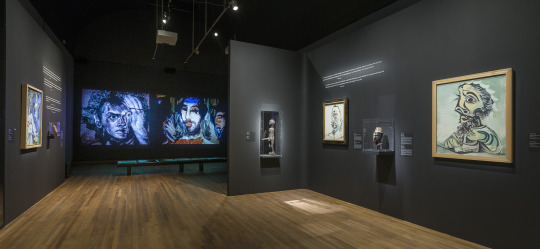

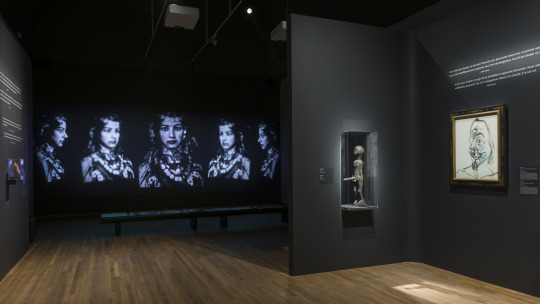
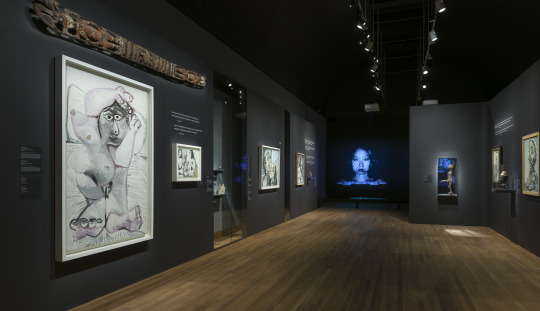

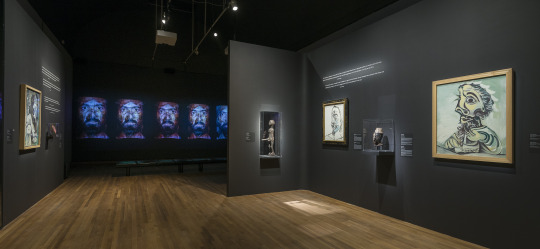
ATLAS FRACTURED (Berlin 2017)
Director of photography
showed at D’AFRIQUE AUX AMERIQUES PICASSO EN FACE A FACE _ MBAM MONTREAL (CAN) 2018
https://www.mbam.qc.ca/calendrier/en/atlas-fractured-a-conversation-on-art-and-humanity-with-theo-eshetu/
0 notes
Photo
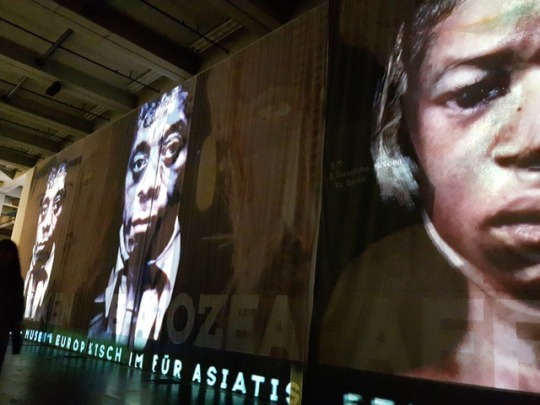

Favourites from DOCUMENTA #1
Theo Eshetu, “Atlas Fractured”, 2017, Digital video projected on banner, colour, sound. 35 min.
The video is projected onto an original banner that once decorated the facade of the Ethnologisches Museum in Berlin-Dahlem (a predecessor of the highly controversial Humboldt Forum in Berlin). The banner has been cut into pieces, shuffled and re-assembled - thus creating a “new world order”. New figures are superimposed on the kind of masks that have long represented continents, and with them the geopolitical division of the world.
2 notes
·
View notes

